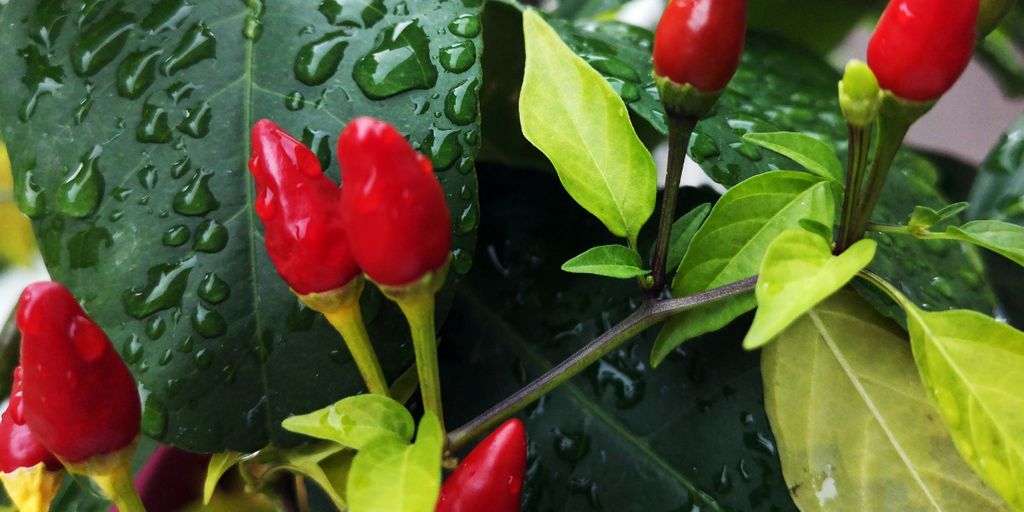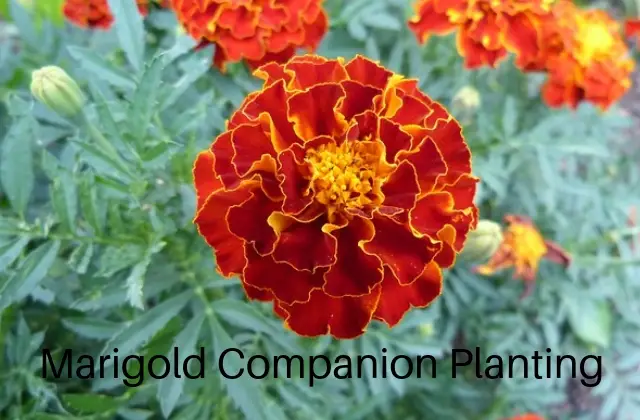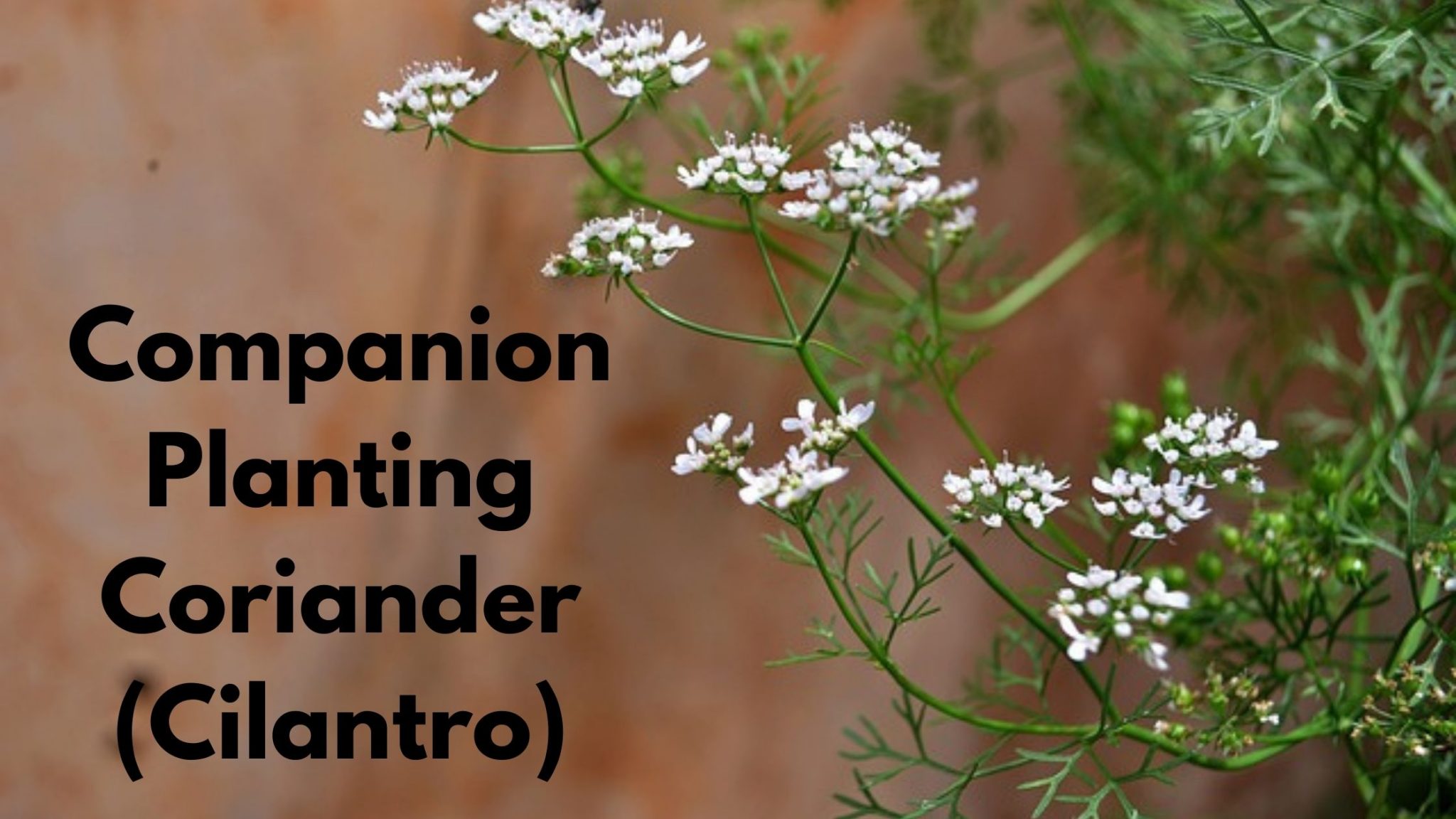The Best Companion Plants For Chili Peppers
The Best Companion Plants for Chili Peppers
Chili peppers are a popular and versatile vegetable that can be grown in a variety of climates. They are also relatively easy to care for, but there are a few things you can do to help them thrive. One of the most important things is to choose the right companion plants.
Companion planting is the practice of planting different types of plants together that benefit each other. There are many different companion plants that can be grown with chili peppers, but some of the best include:
- Basil: Basil is a great companion plant for chili peppers because it helps to repel aphids, mosquitoes, and other pests. It also helps to improve the flavor of the peppers.

- Marigolds: Marigolds are another excellent companion plant for chili peppers. They help to repel nematodes, which are harmful soil-dwelling pests. They also attract beneficial insects, such as ladybugs and lacewings, which help to control pests.

- Nasturtiums: Nasturtiums are a beautiful and edible flower that can also be a great companion plant for chili peppers. They help to repel aphids, whiteflies, and other pests. They also attract pollinators, which help to improve the yield of the peppers.

- Onions and garlic: Onions and garlic are members of the Allium family, which also includes chives, leeks, and shallots. These plants all release sulfur compounds that help to repel pests. They also help to improve the flavor of the peppers.

- Carrots: Carrots are a good companion plant for chili peppers because they help to suppress weeds. They also help to improve the drainage of the soil, which is important for chili peppers.

- Cilantro: Cilantro is a delicious herb that can also be a good companion plant for chili peppers. It helps to attract pollinators, which help to improve the yield of the peppers. It also helps to improve the flavor of the peppers.
- Tomatoes: Tomatoes and chili peppers are both members of the nightshade family, so they can be good companion plants. They help to attract pollinators, which help to improve the yield of both plants. They also help to suppress weeds.

- Spinach: Spinach is a fast-growing leafy green that can be a good companion plant for chili peppers. It helps to suppress weeds and improve the drainage of the soil. It also helps to attract pollinators, which help to improve the yield of the peppers.

In addition to these plants, there are many other companion plants that can be grown with chili peppers. The best way to choose companion plants is to consider the specific needs of your peppers and the climate in which you are growing them.
Growing chili peppers is a rewarding experience, but it can also be challenging. One way to make it easier is to plant companion plants alongside your peppers. Companion plants are those that benefit each other when grown together. For chili peppers, some of the best companion plants include:
- Basil: Basil helps to repel pests such as aphids and mosquitoes, and it also enhances the flavor of chili peppers.
- Marigolds: Marigolds repel nematodes, which can damage the roots of chili peppers. They also attract beneficial insects that help to control pests.
- Onions and garlic: Alliums (plants in the onion family) help to repel aphids, beetles, and other pests. They also contain sulfur compounds that can improve the flavor of chili peppers.
- Tomatoes: Tomatoes help to deter whiteflies and other pests. They also share similar growing conditions as chili peppers, so they can benefit from each other's presence.
If you're looking for more information about companion plants for chili peppers, I recommend visiting Gardenia Inspiration. This website has a comprehensive list of companion plants, as well as information about how to plant and care for them.
FAQ of companion plant chilli
1. What are the benefits of companion planting with chili peppers?
There are many benefits to companion planting with chili peppers. Some of the most common benefits include:
- Attracting pollinators. Chili peppers are pollinated by bees, butterflies, and other insects. Companion planting with flowers that attract these pollinators can help to improve the pollination of your chili peppers, leading to a larger harvest.
- Reducing pests and diseases. Some plants have natural insecticidal properties that can help to repel pests from your chili peppers. For example, planting marigolds or nasturtiums near your chili peppers can help to deter aphids, whiteflies, and other pests.
- Improving soil health. Some companion plants, such as beans and peas, fix nitrogen in the soil, which can help to improve the health of your chili peppers.
- Creating a more attractive garden. Companion planting can help to create a more attractive and diverse garden. By planting different types of plants together, you can create a more visually appealing garden that is also beneficial to the environment.
2. What are some good companion plants for chili peppers?
Some good companion plants for chili peppers include:
- Beans and peas. These plants fix nitrogen in the soil, which can help to improve the health of your chili peppers.
- Marigolds. Marigolds have natural insecticidal properties that can help to repel pests from your chili peppers.
- Nasturtiums. Nasturtiums also have natural insecticidal properties, and they can also attract beneficial insects, such as ladybugs, which can help to control pests.
- Cucumbers. Cucumbers and chili peppers can help to deter each other's pests.
- Lettuce. Lettuce can help to suppress weeds, which can help to keep your chili peppers healthy.
3. What are some bad companion plants for chili peppers?
Some bad companion plants for chili peppers include:
- Tomatoes. Tomatoes and chili peppers can compete for nutrients, so it is best to avoid planting them together.
- Potatoes. Potatoes and chili peppers can both attract the same pests, so it is best to avoid planting them together.
- Eggplants. Eggplants and chili peppers can both attract the same pests, so it is best to avoid planting them together.
- Cabbage. Cabbage and chili peppers can both attract the same pests, so it is best to avoid planting them together.
- Peppers. Different types of peppers can cross-pollinate, which can lead to unpredictable results. It is best to avoid planting different types of peppers together.
4. How far apart should chili peppers be planted?
Chili peppers should be planted about 18-24 inches apart. This will give them enough space to grow and develop properly.
5. How long does it take for chili peppers to mature?
The time it takes for chili peppers to mature depends on the variety of pepper. Sweeter peppers typically mature in 60-90 days, with hotter peppers taking longer.
Image of companion plant chilli
Nasturtiums are a great companion plant for chillies because they attract beneficial insects, such as ladybugs and hoverflies, which help to control pests. They also help to suppress weeds and improve the soil.
Marigolds are another good companion plant for chillies. They help to repel nematodes, which are soil-dwelling pests that can damage chilli plants. They also produce a substance that helps to suppress the growth of fungi.
Coriander is a good companion plant for chillies because it helps to improve the flavor of the chillies. It also helps to deter pests, such as aphids and whiteflies.
Onions are a good companion plant for chillies because they help to repel root knot nematodes. They also help to improve the flavor of the chillies.
Beans are a good companion plant for chillies because they help to fix nitrogen in the soil. This means that the chillies can access more nitrogen, which helps them to grow and produce more fruit.


Post a Comment for "The Best Companion Plants For Chili Peppers"